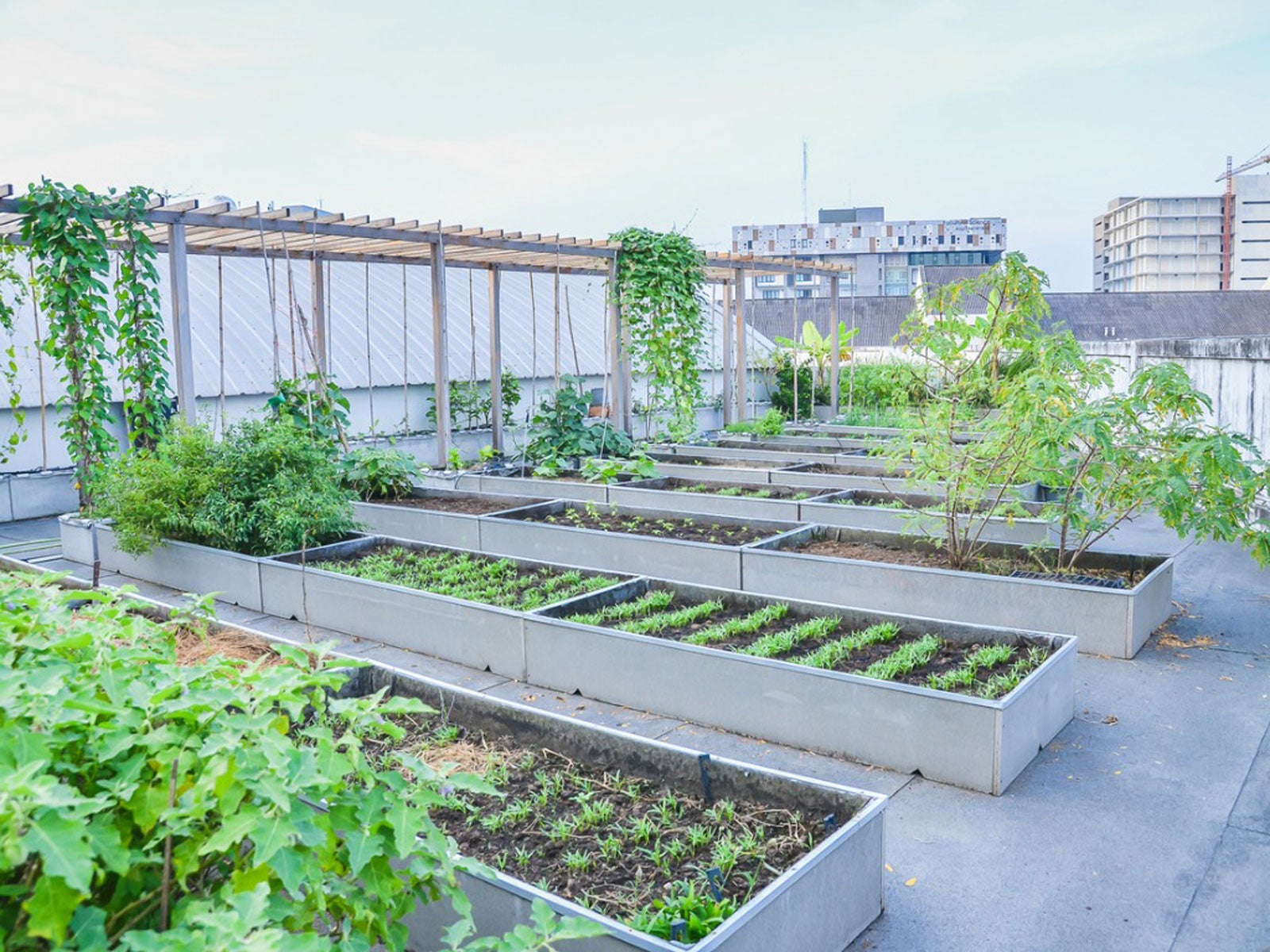Creating Your Own Rooftop Garden


In more urban areas, a gardener is limited in the amount of space that they have. If you find that you are running out of room, or if you want an outdoor living space, then things may be looking up for you, literally. You may want to consider creating a rooftop garden. Rooftop gardens are an ideal way for an urban gardener to expand their space. Rooftop gardens also make good use of frequently unused and wasted space. There are, however, a few things to keep in mind when creating a rooftop garden.
How to Make a Rooftop Garden
First of all, find out how local ordinances, rental property rules, or home owner association regulations view a rooftop garden. Rooftop gardens may be prohibited or require special treatment and it is always best to know these things before you spend time and money. Second, get an architect or contractor involved as soon as possible. You don't need the architect or contractor for the whole garden building process, but you will need them to tell you if the building is safe to build a rooftop garden on. Some buildings were simply not designed to withstand the additional weight a rooftop garden would add. Other buildings may be able to take the extra weight but may only be able to take a limited amount of weight. An architect or contractor should be able to tell you if this is the case with your building. Third, even if your building can structurally take the extra weight, the weight of your rooftop garden should play a role into your design. Try to use as little weight as possible. Use plastic, fiberglass, or foam planting containers and avoid using pavers. Use lightweight potting soil rather than garden dirt. Use Styrofoam peanuts for drainage rather than rocks or pottery shards. Fourth, keep in mind that your rooftop garden will be considerably windier than a normal garden. You will need to incorporate windbreaks into your rooftop garden design. Try using trellises or some other latticed windbreak for your rooftop garden. Windbreaks that disrupt the flow of the wind, rather than trying to stop it completely, are actually more effective. Solid windbreaks are more likely to be knocked down by high winds than ones that allows some wind flow. Plus, you really don't want to eliminate wind flow. You just want to decrease it. Fifth, think about how you will get water to your rooftop garden. Your rooftop garden will need to be watered frequently in hot weather and lugging heavy buckets of water to the roof is not fun or practical. Consider either having a water storage system built in or having an automatic watering system installed. If you keep these things in mind, you will find that your rooftop garden can provide a lovely and great place for you to escape to.
Gardening tips, videos, info and more delivered right to your inbox!
Sign up for the Gardening Know How newsletter today and receive a free copy of our e-book "How to Grow Delicious Tomatoes".

Heather Rhoades founded Gardening Know How in 2007. She holds degrees from Cleveland State University and Northern Kentucky University. She is an avid gardener with a passion for community, and is a recipient of the Master Gardeners of Ohio Lifetime Achievement Award.
-
 Looking For Plants To Give You The Soft And Fuzzies? Try These 5 Fuzzy Leaf Plant Options
Looking For Plants To Give You The Soft And Fuzzies? Try These 5 Fuzzy Leaf Plant OptionsLovers of texture, drama, silver foliage and tactile plants will adore these special sensory garden additions. These fuzzy leaf plant options will leave you all aglow
By Susan Albert
-
 Get Ready For A Summer Of Hummers! Grow These Full Sun Hummingbird Plants and Flowers
Get Ready For A Summer Of Hummers! Grow These Full Sun Hummingbird Plants and FlowersIf you’re lucky enough to enjoy a sunny backyard, make sure you are maxing out on your pollinator opportunities and grow these full sun hummingbird plants and flowers
By Tonya Barnett